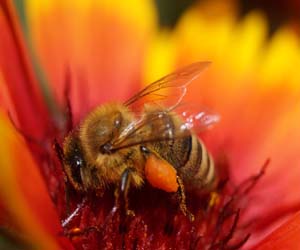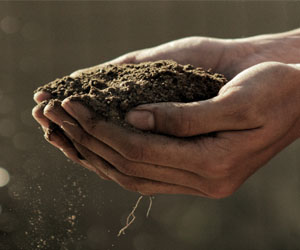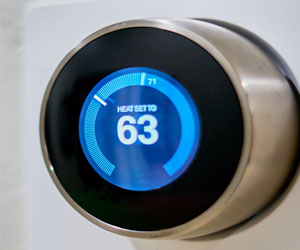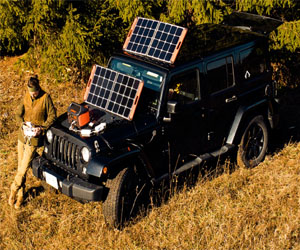


Innovations For A Sustainable Future

As the world grapples with growing concerns about water scarcity and resource management, innovative water-saving technologies have emerged as valuable tools to address these challenges. These technologies help reduce water consumption, promote efficient water use, and contribute to environmental sustainability. This article explores the significance of water-saving technologies, the various innovations in this field, and their potential impact on global water conservation efforts.
The Importance Of Water-Saving Technologies
Water is a finite and precious resource, and the need for water-saving technologies is underscored by several key factors:
Water Scarcity: Many regions worldwide face water scarcity, where the demand for water exceeds the available supply. This challenge is exacerbated by population growth, urbanization, and climate change.
Sustainability: Sustainable water management practices are crucial to ensure the long-term availability of clean water for future generations and to protect ecosystems that rely on water resources.
Efficiency: Efficient water use is not only environmentally responsible but also financially advantageous, as it leads to cost savings for individuals, businesses, and communities.
Water-Saving Technologies And Innovations
Low-Flow Fixtures: Low-flow faucets, showerheads, and toilets use innovative design and technology to reduce water consumption without sacrificing performance. These fixtures limit water flow while maintaining water pressure.
Smart Irrigation Systems: Advanced irrigation technologies use sensors and data analysis to optimize watering schedules and ensure that landscapes receive the right amount of water. This reduces water wastage from over-irrigation.
Greywater Recycling: Greywater systems capture and treat wastewater from sinks, showers, and washing machines, recycling it for non-potable uses such as toilet flushing or landscape irrigation.
Rainwater Harvesting Systems: Rainwater collection systems capture and store rainwater for various purposes, including outdoor use, flushing toilets, and even drinking water with proper treatment.
Wastewater Treatment And Reuse: Advanced wastewater treatment technologies can purify wastewater to a high standard, making it safe for reuse in various applications, including industrial processes and agricultural irrigation.
Leak Detection Technologies: Smart leak detection systems use sensors and data analysis to identify water leaks in real time, preventing water loss and property damage.
Water-Efficient Appliances: Modern washing machines, dishwashers, and water heaters are designed to use less water while maintaining their effectiveness, reducing water consumption in households.
The Significance Of Water-Saving Technologies
Water-saving technologies offer several key benefits:
Resource Conservation: These technologies help reduce water consumption, preserving finite freshwater resources for present and future generations.
Environmental Protection: By reducing water demand, these technologies contribute to the protection of aquatic ecosystems and the preservation of natural water bodies.
Financial Savings: Water-saving technologies can lead to reduced water bills for individuals, households, and businesses, making them financially appealing.
Energy Efficiency: Efficient water use also results in lower energy consumption, as less energy is required for water treatment and distribution.
Climate Resilience: In the face of climate change and shifting weather patterns, water-saving technologies help build resilience against droughts and water scarcity.
Water-saving technologies represent a crucial component of sustainable water management and resource conservation. As these technologies continue to advance and become more accessible, they play an integral role in addressing global water challenges. By embracing water-saving innovations and fostering a culture of responsible water use, we can contribute to a more sustainable and water-secure future, all while protecting one of our most precious resources.
Balancing Rising Energy Demands
 The Growing Energy Demands
The Growing Energy Demands
The primary driver of escalating energy demands is population growth and urbanization, particularly in developing nations. As more people move to urban areas and access modern amenities, energy consumption naturally increases. In parallel, the proliferation of technology, from smartphones to electric vehicles, intensifies our need for electricity. In addition, industrial processes and manufacturing depend heavily on energy-intensive operations.
Energy Sources And Environmental Impact
The conventional sources of energy, such as coal, oil, and natural gas, have been the backbone of energy production for decades. However, their use has resulted in significant environmental consequences, including air pollution, greenhouse gas emissions, and habitat destruction. As a result, there is an increasing push for cleaner, more sustainable energy sources.
The Transition To Renewable Energy
Renewable energy sources, such as solar, wind, and hydropower, are being hailed as the answer to the environmental challenges associated with conventional energy sources. These renewables offer several advantages:
Gardening For Wildlife
 Pest Control: Many of the creatures you invite into your garden, such as birds and beneficial insects, are natural pest controllers. They help keep populations of garden-damaging insects in check.
Pest Control: Many of the creatures you invite into your garden, such as birds and beneficial insects, are natural pest controllers. They help keep populations of garden-damaging insects in check.
Pollinators: Gardens that attract pollinators like bees and butterflies ensure the successful pollination of plants, leading to bountiful harvests of fruits, vegetables, and flowers.
Education: Gardening for wildlife is an educational opportunity for children and adults alike. Observing the behavior and interactions of birds, insects, and other creatures fosters a deeper appreciation for nature.
Aesthetics: A garden designed for wildlife can be a beautiful and thriving oasis, filled with the sights and sounds of the natural world. It can be a serene and inviting place for human enjoyment.
Cleaning Your Home The Eco-Friendly Way
 Reduced Health Risks: Natural cleaning products are less likely to cause skin irritations, allergies, or other health problems associated with chemical exposure.
Reduced Health Risks: Natural cleaning products are less likely to cause skin irritations, allergies, or other health problems associated with chemical exposure.
Eco-Friendly: Natural cleaning solutions are gentle on the environment. They don't contribute to water pollution when washed down drains, and they reduce the production and disposal of harmful chemicals.
Versatility: Natural ingredients like vinegar, baking soda, and lemon juice can be used in a variety of cleaning tasks, reducing the need for multiple specialized cleaning products.
Common Natural Cleaning Solutions
Vinegar: White vinegar is a versatile natural cleaner that can be used to disinfect surfaces, remove stains, and even clean glass.
Baking Soda: Baking soda is an effective abrasive cleaner, perfect for scrubbing surfaces, deodorizing, and eliminating stains.
Lemon Juice: Lemon juice is a natural disinfectant that also leaves behind a fresh, citrus scent. It's great for cutting through grease and grime.
Essential Oils: Many essential oils, such as tea tree oil, lavender oil, and eucalyptus oil, have natural cleaning and disinfecting properties. They can be added to homemade cleaning solutions for added fragrance and antibacterial power.
Olive Oil: Olive oil can be used to clean and polish wooden surfaces and stainless steel appliances.
 Soil Testing: Start with a soil test to determine its pH level and nutrient content. This guides you in making necessary adjustments.
Soil Testing: Start with a soil test to determine its pH level and nutrient content. This guides you in making necessary adjustments.
Clear The Area: Remove any weeds, rocks, or debris from the planting area to provide a clean slate for your garden.
Amend The Soil: Depending on the soil test results, amend your soil with organic matter like compost, well-rotted manure, or peat moss. These materials improve soil structure and nutrient content.
Till The Soil: Use a tiller or a spade to mix in the amendments and break up compacted soil. The goal is to create a loose, well-aerated soil structure.
Mulch The Surface: Apply a layer of organic mulch to conserve moisture, regulate soil temperature, and suppress weed growth.
Maintain Soil Health: Regularly test and amend your soil as needed. Crop rotation and cover cropping can also help maintain soil fertility.
Water And Monitor: After planting, water your garden beds appropriately, keeping the soil consistently moist but not waterlogged. Monitor plant health for signs of nutrient deficiencies.
Soil preparation is not a one-time task; it's an ongoing process. Healthy soil is the foundation of a productive garden, and it requires attention and care. With the right preparation, your garden will thrive, producing abundant harvests and blooming with vibrant flowers. Whether you're a novice gardener or an experienced one, soil preparation is a critical step in your journey toward gardening success.






Embracing Simplicity And Sustainability
 Tiny House Living isn't just about living in small spaces; it's a philosophy that's gaining popularity worldwide. It's a choice to downsize and simplify, allowing individuals and families to lead more intentional lives. The movement is driven by a desire to reduce environmental impact, lower costs, and free up time for what truly matters.
Tiny House Living isn't just about living in small spaces; it's a philosophy that's gaining popularity worldwide. It's a choice to downsize and simplify, allowing individuals and families to lead more intentional lives. The movement is driven by a desire to reduce environmental impact, lower costs, and free up time for what truly matters.
One of the most compelling aspects of the Tiny House Lifestyle is its focus on minimalism. Living in a tiny house necessitates a careful evaluation of one's possessions. This shift towards owning fewer things allows for a clutter-free, stress-free environment. People find themselves no longer burdened by the weight of material possessions but rather liberated to explore other aspects of life.
Maximizing space utilization is at the heart of tiny house design. Every square inch is carefully considered and used efficiently. Multi-functional furniture, built-in storage, and innovative space-saving solutions are key elements of tiny house living. These homes prove that you don't need a massive space to live comfortably; you just need a well-thought-out layout and design.
Reducing the environmental footprint is another driving force behind the Tiny House Lifestyle. Tiny houses are typically built with sustainable materials and are energy-efficient. Their compact size requires fewer resources to construct and maintain. Furthermore, living small encourages individuals to consume less, reduce waste, and lead a more eco-friendly life.
Paving The Way For A Smarter World
 Enhancing Everyday Life
Enhancing Everyday Life
Intelligent solutions are all around us, making our daily routines more convenient and enjoyable. Take, for example, the personal virtual assistants like Siri and Alexa, which have become integral parts of many households. These AI-driven solutions can answer questions, provide weather updates, control smart home devices, and even play your favorite music with a simple voice command. They are a prime example of how intelligent solutions have become an indispensable part of our lives, adding a layer of convenience and personalization to our everyday experiences.
Efficiency In Business
In the corporate world, intelligent solutions are optimizing business operations, boosting productivity, and improving decision-making processes. Data analytics, for instance, helps companies gain insights into customer behavior and market trends. This, in turn, allows for more informed and targeted marketing strategies, ultimately leading to better outcomes and growth. Additionally, the automation of repetitive tasks through intelligent solutions can free up employees to focus on more creative and strategic aspects of their work.
Healthcare And Well-Being
The healthcare industry is witnessing a revolution through the application of intelligent solutions. Telemedicine, for instance, allows patients to receive medical consultations from the comfort of their homes. Wearable health monitoring devices provide real-time data to both patients and healthcare professionals, helping to manage chronic conditions and improve overall health. Artificial intelligence is also aiding in the analysis of medical images, enabling more accurate diagnoses and treatment planning.
Transportation And Mobility
Intelligent solutions have the potential to redefine the way we move from one place to another. Autonomous vehicles are a prominent example. These vehicles use sensors, cameras, and AI algorithms to navigate roads and make split-second decisions, aiming to increase safety and efficiency in transportation. Additionally, smart transportation systems can help reduce traffic congestion and energy consumption, making our daily commutes more sustainable.